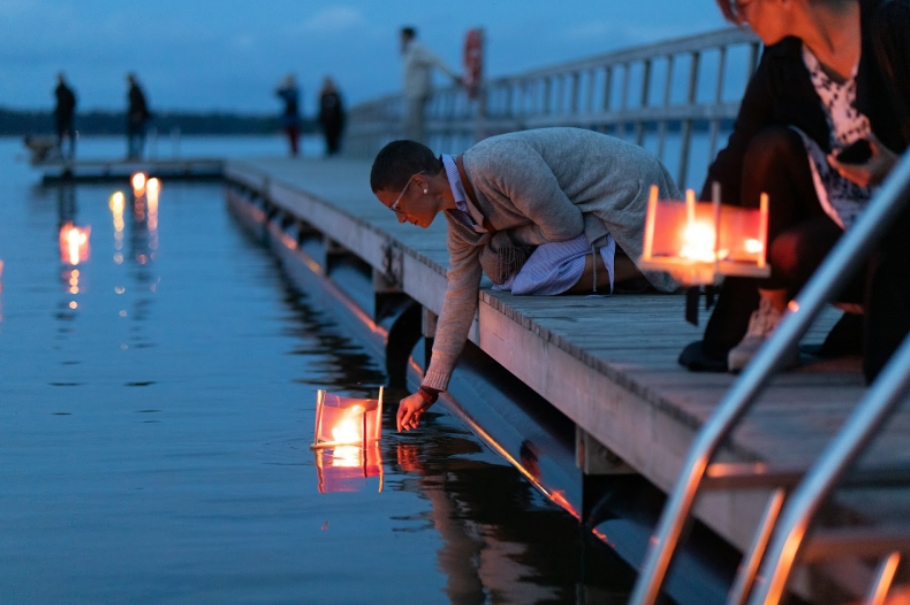The desire to create a lasting memorial for a loved one is a timeless human tradition. For centuries, we have used stone to mark a final resting place, a permanent tribute to a life that was lived. The purpose has always been to remember and to tell a story. But in today’s world, the stories of our lives are no longer just contained in a few lines of an obituary; they are captured in countless digital photos, videos, and shared memories online.
So how do we bridge the gap between our rich, digital legacies and the timeless tradition of a physical memorial? A growing number of families are now incorporating subtle, respectful technology into the design of a memorial monument. It’s a beautiful way to create a “living” tribute, connecting the enduring strength of granite with the dynamic, colorful stories of a life well-lived.
This isn’t about creating a flashy, high-tech display. It’s about using modern tools to tell a more complete and accessible story for generations to come. Here are a few ideas for thoughtfully incorporating technology into a memorial design.
The QR Code: A Gateway to a Digital Archive
This is the most popular and accessible way to link a physical monument to a rich digital legacy. A discreet QR code can be subtly etched onto the side or back of a headstone or placed on a small bronze plaque at its base.
When a visitor scans this code with their smartphone, it can instantly transport them to a dedicated memorial website. This website can serve as a living, expanding archive of your loved one’s life, containing far more than could ever fit on a stone. Imagine being able to link to:
- A full biography and life story.
- Extensive photo galleries from all stages of their life.
- Home video clips of them laughing and sharing special moments.
- A playlist of their favorite music.
- An online guestbook where friends and family from all over the world can share their own stories and condolences.
This turns a quiet visit to the cemetery into a rich, multimedia experience of remembrance. Creating a digital legacy is a powerful and modern way to keep a person’s story alive.
Augmented Reality: Bringing Memories to Life
For a truly immersive experience, some families are beginning to explore augmented reality (AR). AR technology uses a smartphone’s camera to overlay digital information onto the real world.
With a custom-designed app or a social media filter, a visitor could point their phone at the headstone, and it could trigger a digital experience. This could be a short, favorite video clip of your loved one that appears to play right on the stone, or a slideshow of photos that floats in the space around the monument. It’s a powerful and poignant way to bring a static memorial to life with the sound of a voice or the warmth of a smile.
Solar-Powered Lighting for a Gentle Glow
A simpler, more subtle use of technology is the integration of solar-powered lighting. This isn’t about creating a bright, distracting display, but about providing a soft, respectful illumination for the memorial after the sun has set.
A small solar-powered light can be professionally installed at the base of the monument or in the landscaping directly in front of it. The small solar panel gathers energy during the day, and at dusk, it automatically casts a gentle, warm glow on the face of the headstone. This can make the memorial feel less solitary in the dark and can be a beautiful, comforting sight for anyone visiting in the evening. Cemeteries are increasingly embracing new ways to enhance the visitor experience.
A Crucial First Step: Check with the Cemetery
Before you fall in love with any of these ideas, it is absolutely essential that you speak with the administration of your specific cemetery. Every cemetery has its own set of rules and regulations regarding the size, style, and type of monuments it allows. They may also have specific rules about any additions to a monument, including QR codes or lighting. Getting their approval is a non-negotiable first step in the design process.
Technology, when used with thought, care, and respect, doesn’t have to be at odds with tradition. It can be a powerful new tool to help us do what we have always done: honor the people we love and tell their stories, so they are never forgotten.





























